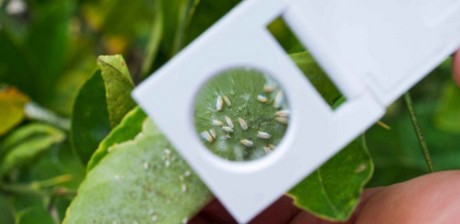Crop Scouting is referred to as monitoring, inspection or surveillance of crop for general plant health, i.e. insect pests, mites, diseases, nutritional and other disorders. It involves gathering and recording of information about a particular crop on a regular basis to enhance the process of making informed crop management decisions.

Reasons for scouting;
- To enable commercial growers, make informed decisions
- Monoculture – high input production systems
- To closely monitor spread of pests and diseases
- To detect early signs of pest and disease attack and also nutritional requirements
Objectives of Scouting
- Short Term: to enable the grower to make immediate informed decisions on crop management at a given point and time e.g. Is it necessary to spray? Which pesticide? Where should it be applied and when?
- Long Term: develop a database which can be used as a basis of long-term management strategy for the farm.
Scouting Process
To enable good problem recognition, good knowledge of the crop, pests and diseases is critical. Of importance is the timely identification of the major pests, diseases, weeds; stages of development, damage symptoms and the beneficial organisms at different morphological stages in the production systems
Methods of sampling
- Plant sampling – random sampling, point sampling
- Insect traps – pheromone traps and insect-specific color traps
- Indicator plants – highly susceptible plants planted to monitor early arrival of target insects
- Color-coded pegs – indicate areas of attack/infestation placed 3 m above the crop canopy
- Zigzag pattern (at least 10 sites/field)
- Multi bisectoral pattern
- “W” pattern
Record keeping – proper record keeping is essential on problem type, locality and other disorders observed.
Remember, scouting involves thorough inspection of the whole plant from soil and roots to the top of the newest shoot, carefully checking both the upper and lower sides of all the leaves, flowers, pods, etc.
For mor e information
e information
Greenlife Crop Protection Africa
www.greenlife.co.ke
